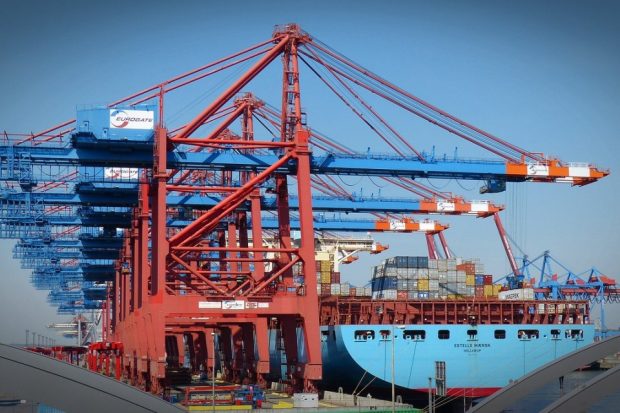Measuring trade – why does the world seem to import more than it exports?

With complex international trade negotiations in prospect for the UK, Jonathan Athow explains how ONS is addressing the asymmetries in global trade statistics.
“According to the World Trade Organisation, the total value of world trade in goods was over $15 trillion in 2016. Beneath the surface, the figures are a little bit more interesting showing that all the countries in the world imported $350 billion more goods than they exported. Despite the economist Paul Krugman working out the (tongue in cheek) economics of interstellar trade, this difference is not because we are importing goods from extra terrestrial life forms.
Rather there are some long-standing challenges in properly measuring trade flows. These problems are even more obvious when looking at the trade measured by each country: there are often ‘asymmetries’ when one country’s imports do not match up with the exports of another country. For example, the UK’s exports to Australia might not match with the Australian estimates of imports from the UK.
“Understanding the UK’s trade asymmetries and the reasons behind them are hugely important.”
Total trade asymmetries are very small as a share of global trade volumes, amounting to a few percentage points. Nonetheless, when expressed in billions of pounds they are much more substantial. The aggregate figure also masks the fact that there can often be sizeable assymetries between particular trading partners.
Goods
In theory, measuring the flow of goods should be easy. There are customs checks for goods that move across national borders, and within the EU there are mechanisms to monitor goods arriving and leaving different member states. So we should be able to count nearly everything? The reality is quite different.
There is a long list of issues to be dealt with, including a number of relatively simple to state, but often hard to solve, measurement issues. For example, the price of imports will often include the costs of transport and insurance, while exports are traditionally reported without these costs. There is also a challenge about the exchange rates used, which might be recorded differently by the exporting and importing country. We also need to bear in mind that people may not always correctly or consistently complete the customs forms although HMRC invest a lot of time and effort to ensure that they do.
There are also conceptual differences stemming from what we are actually trying to measure. The trade statistics we produce are linked to the UK’s national accounts and balance of payments, for which the key concept is the change ineconomic ownership. So the ONS’s main trade statistics only count items where there is a change in economic ownership, e.g. a UK company buying from or selling to an overseas company, not always where goods move across borders. On that basis, moving a good across a border is not necessarily an export or import; where the change in economic ownership of that good is.
We can see the rationale for the economic ownership approach by considering a simple example of wine which has been sold by a French vineyard to a German supermarket, but where it is stored in a warehouse in Belgium en route. If we follow the approach of cross border movements, the wine is first imported into Belgium, but then exported from Belgium to Germany. But it is not really meaningful to describe the wine as an export from Belgium. Using economic ownership, this is simply viewed as an export from France to Germany, which seems to better reflect the reality of the transaction.
As the movements of good across borders needs to be converted to a ‘change in economic ownership’ basis, this produces an additional source of trade asymmetries. Different countries might use different approaches to, or reach different judgements on, establishing economic ownership.
The economic ownership approach is far from the last word in measuring the value of trade. Take, for example, the export of a UK-made car worth £20,000. If however, £8,000 worth of the components for that car are imported, then the £20,000 figure is likely to overstate the true value of the export. Increasingly people are interested in a ‘trade in value added’ approach to measurement, which would be £12,000 in the case of the car. As global supply chains become more important, so concepts such as economic ownership and trade in value added are more of interest. At the moment, trade in value added statistics are still in development, but they will be a further challenge in cross-country comparisons.
Services
Comparing goods exports and imports is difficult, but that is nothing compared with the trade in services.
With services, there are no customs checks as often nothing physically moves between countries. The main way to measure services is therefore through surveying a proportion of firms who import and export services and using this to produce estimates representative of the country as a whole. In addition, services are very difficult to measure which means that valuing those exports and imports is even more difficult. Measuring the value of financial services is a particular area of complexity. All these issues introduce additional reasons why trade figures may not match between countries.
To support statistical offices in measuring trade flows of goods and services, there are internationally agreed rules that are designed to harmonise the data and definitions. This certainly helps, but it is not a panacea as many transactions are becoming increasingly complex meaning people have to exercise judgement and might come to different views. In addition, introducing new rules takes time meaning not all countries are fully in line with the latest standards.
All these differences contribute to the trade asymmetries we see around the globe, and the UK is no exception. Understanding the UK’s trade asymmetries and the reasons behind them are hugely important. Trade statistics help us understand our economy, and are used by government to inform decision making. Last week we published some initial analysis on the UK’s trade asymmetries with the aim of better understanding our trade relationships. The paper can be found here.
